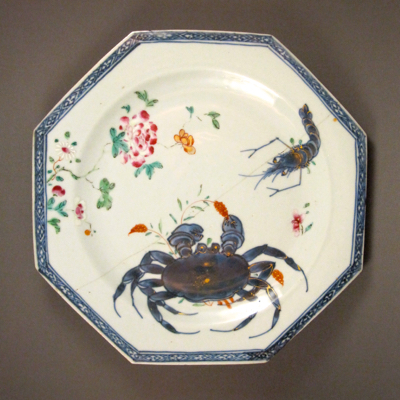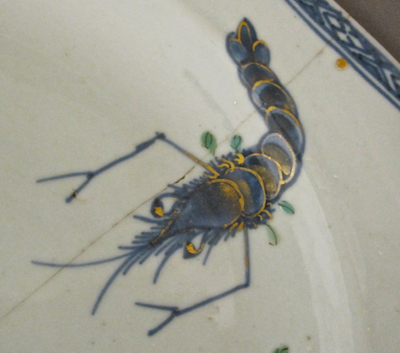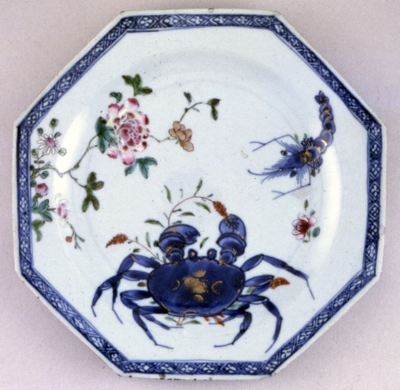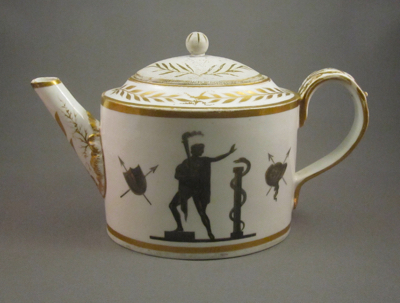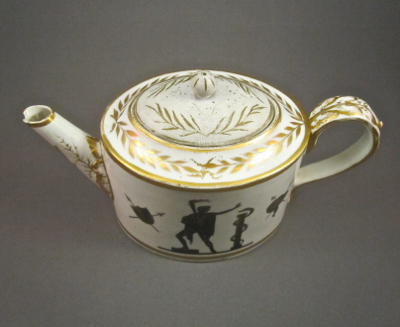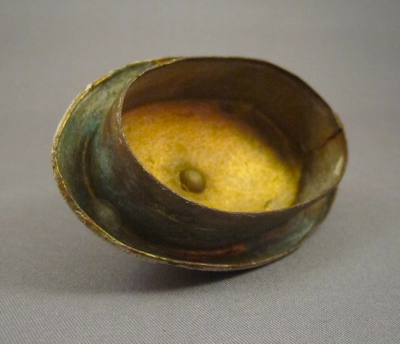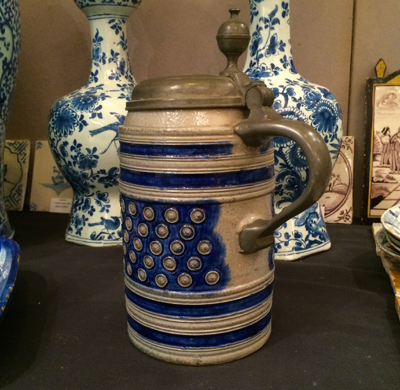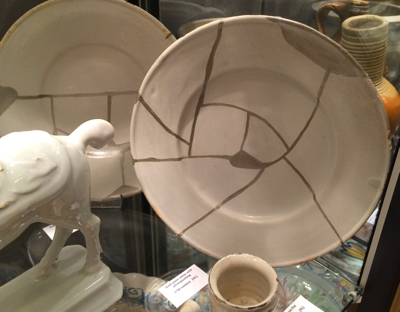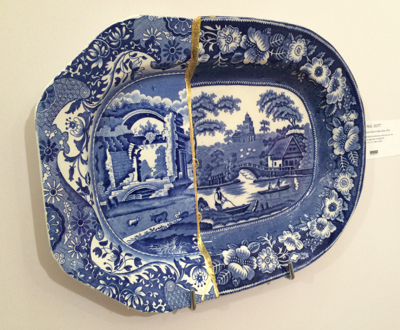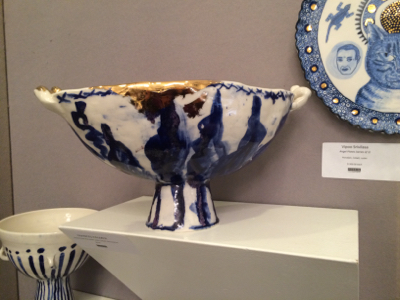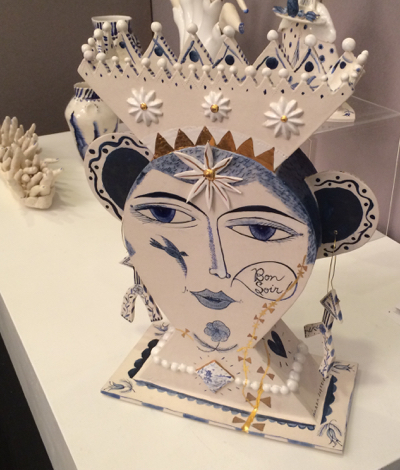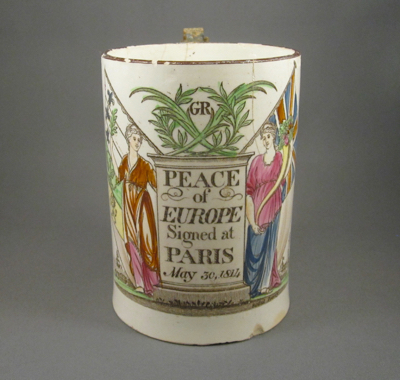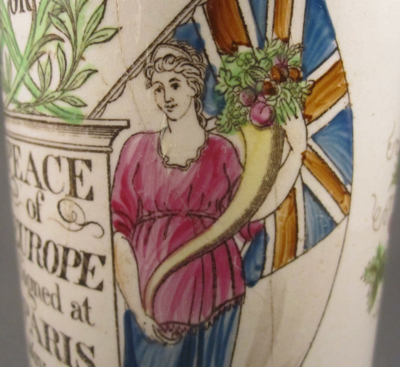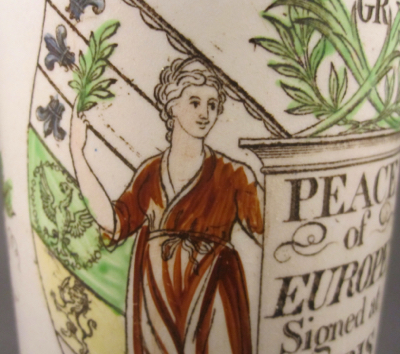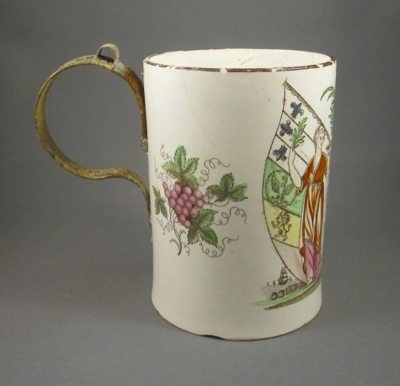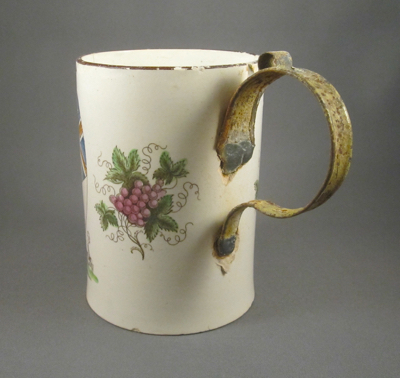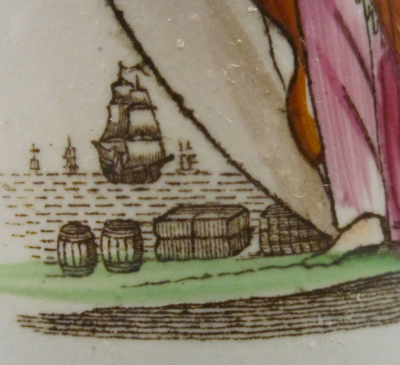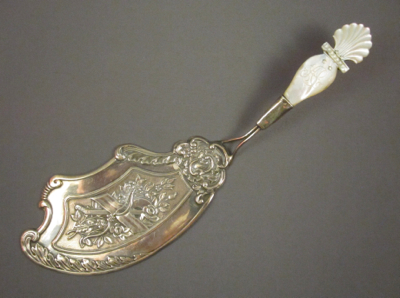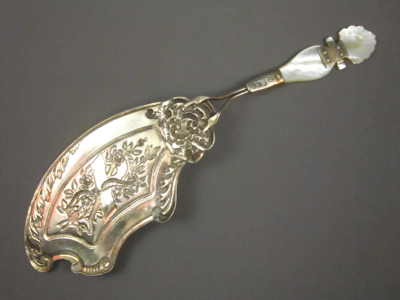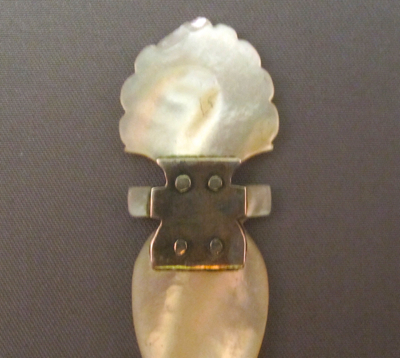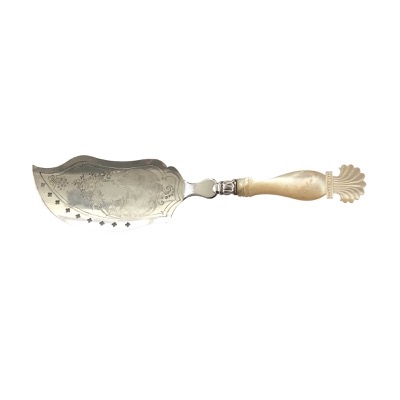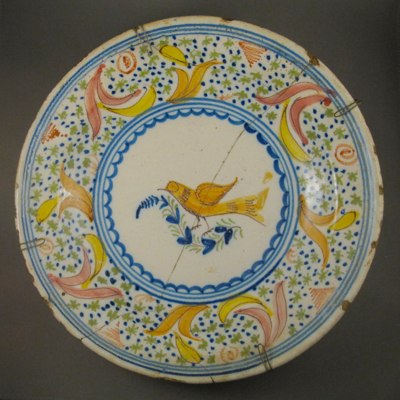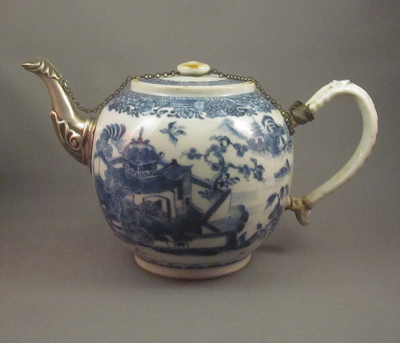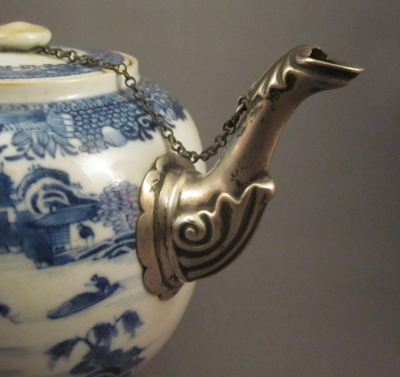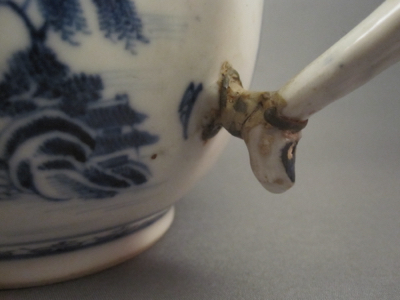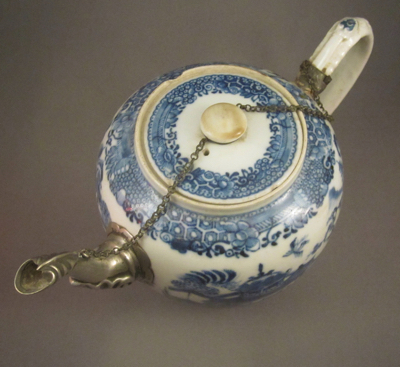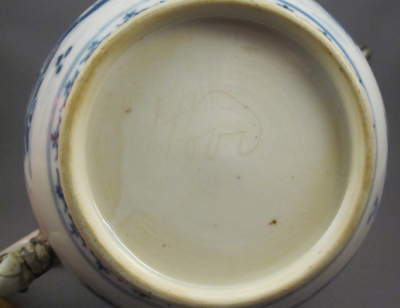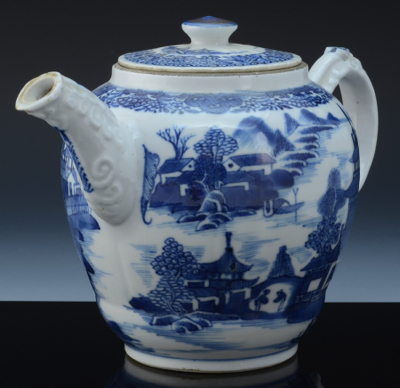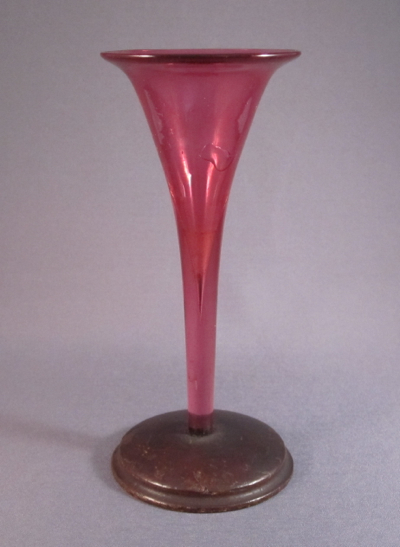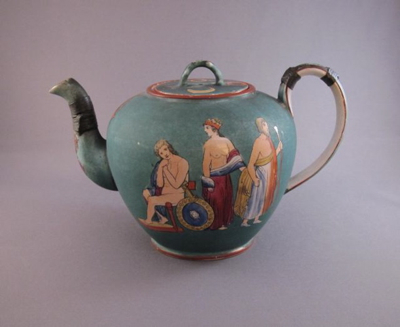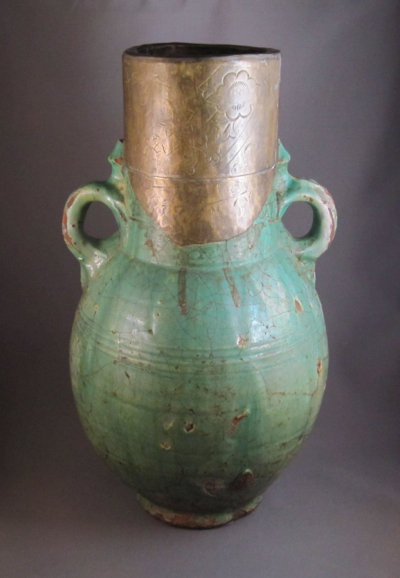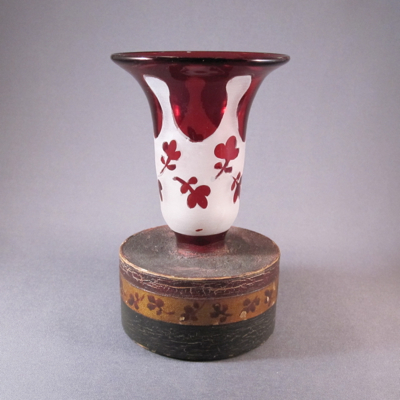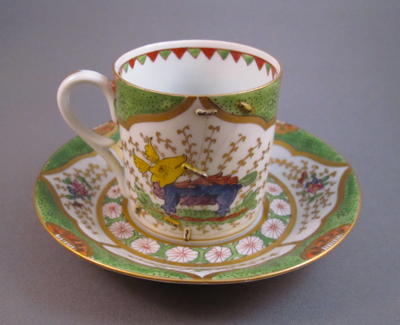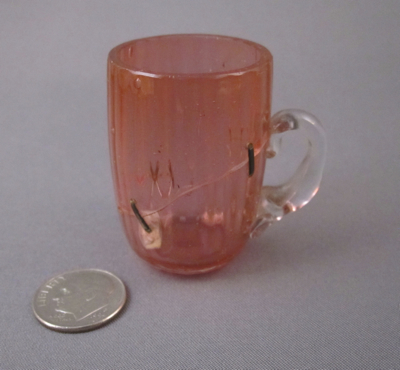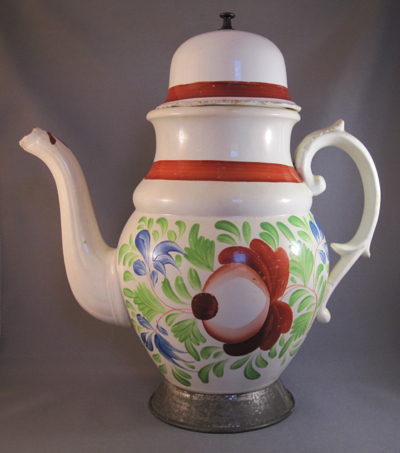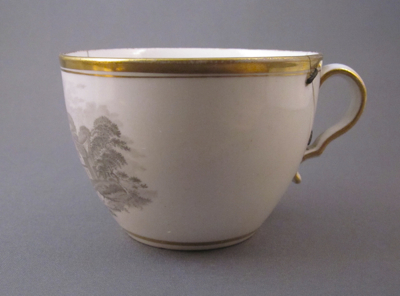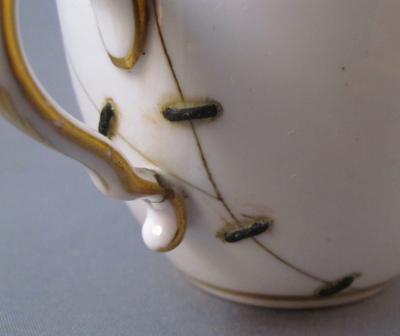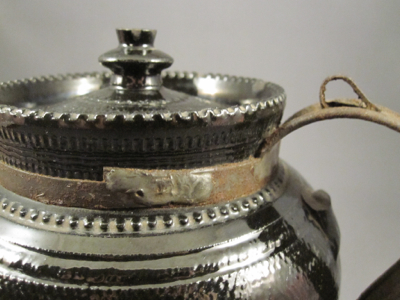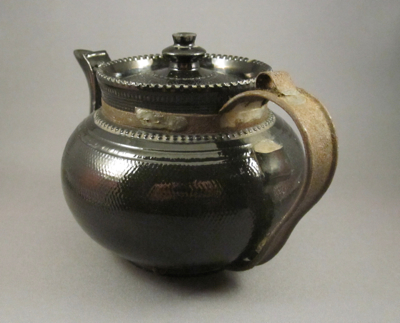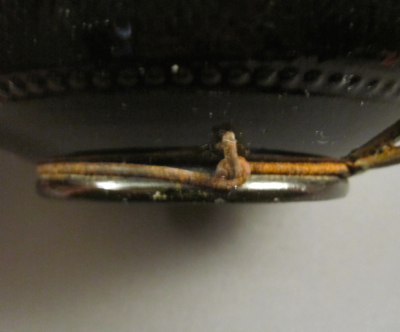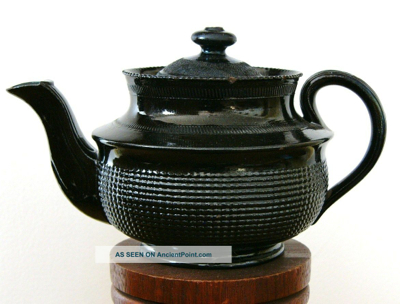Most people I encounter are astonished the first time they see broken ceramics held together with staples. I was, too, at a young age when I saw a small stapled dish. The first words uttered are typically “how did they do that?” If you type that very question into my search box on this page, a post from a few years ago will pop up and help answer that much asked question.
Sadly, most pieces repaired with staples, aka rivets, are not signed by the menders so we have no idea who repaired them. I have seen 18th century English and American newspaper advertisements and calling cards from tinkers and jewelers offering their repair services, as well as early prints showing “china menders” with their tools. Today, antique ceramics with staple repairs are not uncommon but many rare examples are quickly disappearing, as restorers will carefully remove staples, fill the holes and erase all evidence of the original “honest” repair. Although I have dozens of examples of early staple repair on a variety of forms, I still get a thrill when I encounter a rare or unusual example untouched by a modern restorer.
This porcelain plate was made in Jingdezhen, China, during the Qing dynasty (1740-1760) and measures 8-1/2″ in diameter. It is decorated in the Famille rose palette and features a large blue crab, crayfish, flowers, and a border with gilt detailing. Early in its life it was dropped, cleanly breaking it in half. An experienced china mender reattached the plate using six small evenly spaced brass staples. Repairs such as this are so tight and secure that the plate can be returned to the dinner table without fear of it coming undone. That is, unless another clumsy person lets it slip from his or her hands.
Another example, nearly identical to mine, is in the permanent collection of the British Museum. It was donated in the 19th century by Sir Augustus Wollaston Franks, described by Marjorie Caygill, historian of the British Museum, as “arguably the most important collector in the history of the British Museum, and one of the greatest collectors of his age”.
Photo courtesy of the British Museum
